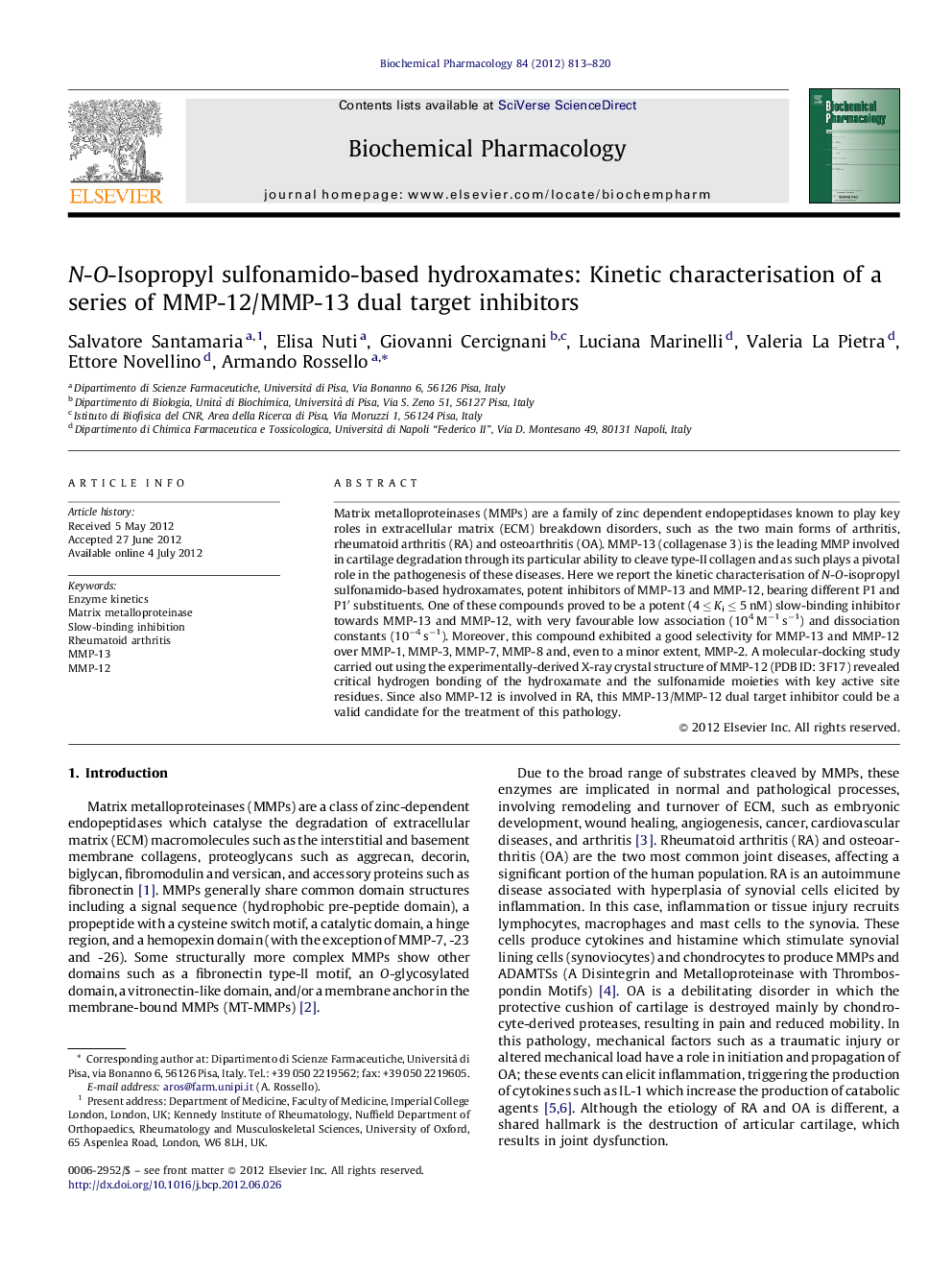| Article ID | Journal | Published Year | Pages | File Type |
|---|---|---|---|---|
| 5823780 | Biochemical Pharmacology | 2012 | 8 Pages |
Abstract
Matrix metalloproteinases (MMPs) are a family of zinc dependent endopeptidases known to play key roles in extracellular matrix (ECM) breakdown disorders, such as the two main forms of arthritis, rheumatoid arthritis (RA) and osteoarthritis (OA). MMP-13 (collagenase 3) is the leading MMP involved in cartilage degradation through its particular ability to cleave type-II collagen and as such plays a pivotal role in the pathogenesis of these diseases. Here we report the kinetic characterisation of N-O-isopropyl sulfonamido-based hydroxamates, potent inhibitors of MMP-13 and MMP-12, bearing different P1 and P1â² substituents. One of these compounds proved to be a potent (4 â¤Â Ki â¤Â 5 nM) slow-binding inhibitor towards MMP-13 and MMP-12, with very favourable low association (104 Mâ1 sâ1) and dissociation constants (10â4 sâ1). Moreover, this compound exhibited a good selectivity for MMP-13 and MMP-12 over MMP-1, MMP-3, MMP-7, MMP-8 and, even to a minor extent, MMP-2. A molecular-docking study carried out using the experimentally-derived X-ray crystal structure of MMP-12 (PDB ID: 3F17) revealed critical hydrogen bonding of the hydroxamate and the sulfonamide moieties with key active site residues. Since also MMP-12 is involved in RA, this MMP-13/MMP-12 dual target inhibitor could be a valid candidate for the treatment of this pathology.
Keywords
Related Topics
Health Sciences
Pharmacology, Toxicology and Pharmaceutical Science
Pharmacology
Authors
Salvatore Santamaria, Elisa Nuti, Giovanni Cercignani, Luciana Marinelli, Valeria La Pietra, Ettore Novellino, Armando Rossello,
